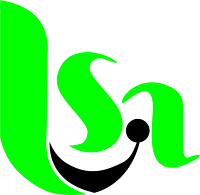In a groundbreaking move, Google is contemplating downsizing its workforce and substituting a portion of employees with Artificial Intelligence (AI). While the exact number of individuals affected remains unclear, this signals a significant development in the transition from human labor to AI-driven automation.
At the beginning of last year, Google introduced the "AI-powered advertising era." As part of this initiative, the company sought to leverage AI technology to revolutionize the advertising experience, creating automatically generated assets derived from ad content and existing landing pages.
One notable feature, the Max Perform feature, even allows ads to dynamically change in real-time based on click-through rates to maximize visibility. This intricate task traditionally demands substantial human effort but can now be managed efficiently through AI.
The potential impact on employment due to the integration of AI has been a topic of discussion, raising concerns about job security. Google's consideration of workforce reduction, while embracing AI, underscores the accelerating evolution of the symbiotic relationship between humans and technology.
The AI-Powered Advertising Era:
Google's pursuit of an AI-driven advertising landscape started with the ambition to enhance user experiences and streamline advertising processes. The introduction of features like Max Perform exemplifies the tech giant's commitment to harnessing the power of AI for creating adaptive and responsive advertising content.
The Max Perform feature not only showcases the adaptability of AI but also emphasizes its ability to optimize ad visibility. This capability significantly reduces the manpower required for such tasks, marking a paradigm shift in the traditional roles of human workers.
The Uncertain Future for Human Workers:
While Google has not disclosed the precise number of employees potentially affected by this shift, the mere contemplation of such a move raises questions about the future dynamics of the job market. As AI continues to evolve and integrate into various industries, the workforce must adapt to new roles and responsibilities.
The Transition to an AI-Driven Workforce:
The development and deployment of AI technologies come with both challenges and opportunities. Businesses and employees alike must navigate the shifting landscape, exploring ways to reskill and upskill to remain relevant in an increasingly AI-driven world.
As Google explores the potential replacement of human roles with AI, it prompts a broader reflection on the future of work and the need for a proactive approach to adapt to the evolving technological landscape. The integration of AI is not merely a threat but also an opportunity for innovation and growth.
In Conclusion:
The prospect of Google considering layoffs in favor of AI-driven automation highlights the accelerating pace of technological advancements. While uncertainties persist regarding the precise impact on jobs, this development underscores the importance of preparing for a future where humans and AI work collaboratively, each contributing their unique strengths to drive progress and innovation.


